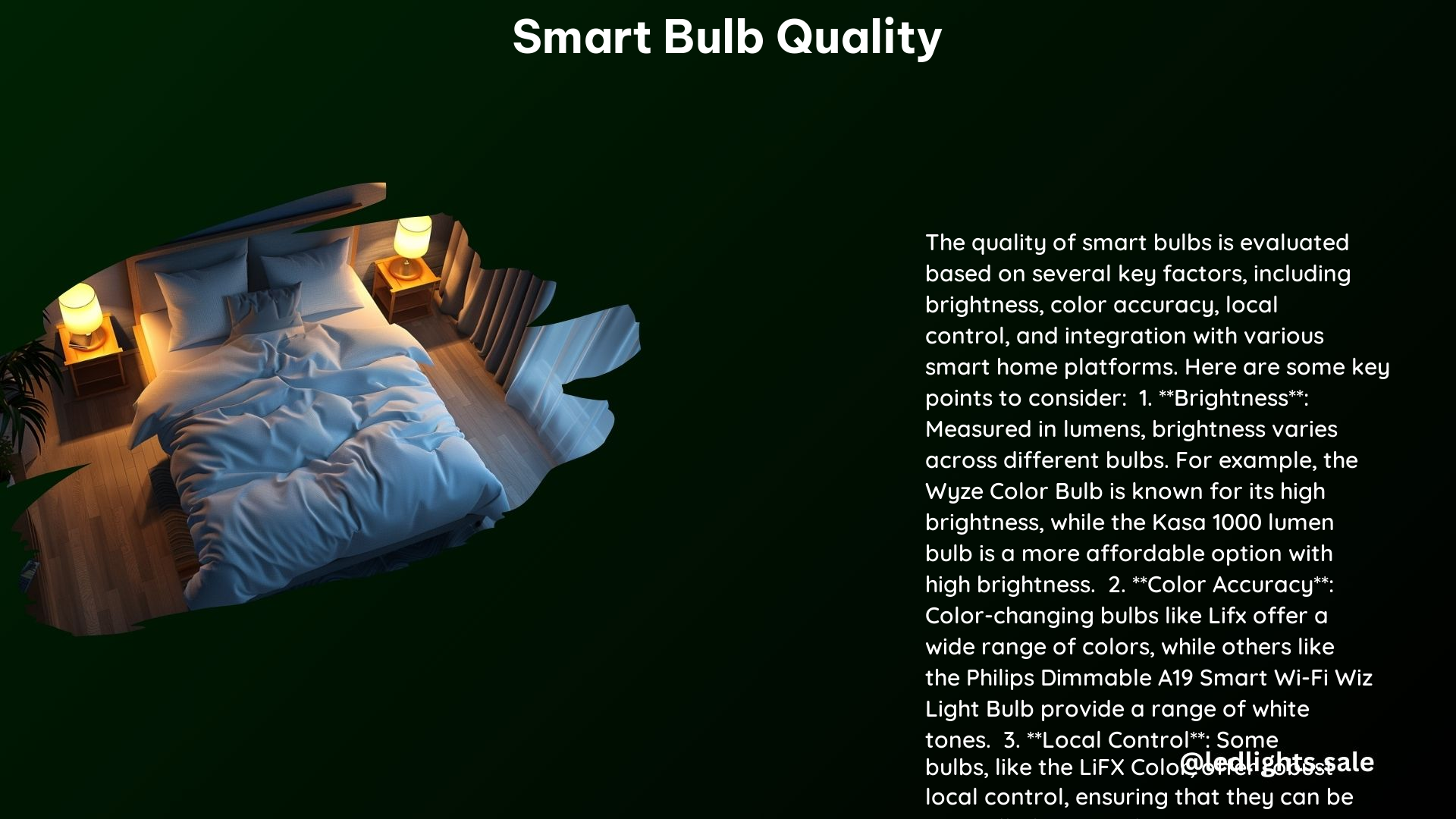Smart bulbs have become increasingly popular in recent years, offering homeowners and businesses a convenient and energy-efficient way to control their lighting. However, with the wide range of options available on the market, it can be challenging to determine which smart bulbs offer the best quality and performance. In this comprehensive guide, we’ll delve into the key aspects of smart bulb quality, providing you with the information you need to make an informed purchase.
Lifespan and Comparison to Traditional Bulbs
One of the primary advantages of smart bulbs is their extended lifespan compared to traditional incandescent bulbs. On average, a smart bulb can last between 15,000 to 25,000 hours, while incandescent bulbs typically have a lifespan of only 1,000 to 2,000 hours. This significant difference is largely due to the use of LED technology in smart bulbs, which is more durable and less prone to burnout.
To put this into perspective, a smart bulb with a lifespan of 20,000 hours could potentially last for over 13 years if used for an average of 4 hours per day. In contrast, an incandescent bulb with a 2,000-hour lifespan would need to be replaced multiple times during the same period.
Installation Requirements

While smart bulbs offer numerous benefits, they do have specific installation requirements that must be considered to ensure optimal performance and longevity. One of the primary concerns is the use of enclosed or recessed fixtures, which can lead to heat buildup and negatively impact the bulb’s performance and lifespan.
According to a study conducted by the U.S. Department of Energy, smart bulbs installed in enclosed or recessed fixtures can experience a significant reduction in their lifespan, with some bulbs failing within just a few months of use. To mitigate this issue, it is recommended to avoid using smart bulbs in these types of fixtures and instead opt for open or well-ventilated lighting solutions.
Another important consideration is the compatibility of smart bulbs with traditional dimmer switches. Many smart bulbs are not designed to work with standard dimmer switches, as the interference can disrupt the bulb’s power supply and cause issues with brightness control and overall performance. To ensure compatibility, it is recommended to use smart dimmer switches or other compatible dimming solutions specifically designed for use with smart bulbs.
Power Outage Handling
Power outages can be a common occurrence in many areas, and it’s essential to understand how smart bulbs handle these situations. Fortunately, most high-quality smart bulbs are designed to handle power outages in a seamless manner, with features that ensure a smooth transition when power is restored.
One key feature is memory retention, where some smart bulbs can retain their previous state when power is restored. This means that if a bulb was turned on and set to a specific brightness or color before the outage, it will automatically return to those settings when the power is back on. This can be particularly useful for maintaining the desired ambiance and lighting conditions in a space.
Additionally, some smart bulbs are designed to automatically restart with their default settings when power is restored. This ensures that the bulbs are functional and ready for use, even in the event of a sudden power interruption.
Technical Specifications
When evaluating the quality of smart bulbs, it’s crucial to consider their technical specifications, as these can have a significant impact on the overall performance and user experience.
Color Temperature: Smart bulbs can offer a wide range of color temperatures, from warm white (2,500K) to cool white (8,500K). This versatility allows users to create the desired ambiance, from cozy and inviting to energizing and productive.
Brightness: Measured in lumens, the brightness of smart bulbs can vary significantly, with some models offering up to 1,000 lumens or more. This range of brightness options enables users to tailor the lighting to their specific needs, whether it’s for task lighting, ambient lighting, or mood lighting.
Color Changing: Many high-quality smart bulbs are capable of displaying millions of colors, making them ideal for creating dynamic and customizable lighting experiences. This feature is particularly useful for setting the mood, enhancing ambiance, or even matching the lighting to specific events or occasions.
Smart Home Integration: One of the key advantages of smart bulbs is their ability to integrate with popular smart home platforms, such as Alexa, Google Assistant, and HomeKit. This integration allows users to control their lighting through voice commands, mobile apps, or even automated schedules, providing a seamless and convenient user experience.
Top-Rated Smart Bulbs
To help you navigate the vast array of smart bulb options, here are some of the top-rated smart bulbs on the market:
| Bulb | Features | Price |
|---|---|---|
| AiDot Linkind Matter Smart Light Bulb | – 16 million colors – Works with multiple smart home platforms – Affordable price point |
Around $20 |
| WiZ 60W A19 Color LED Smart Bulb | – Strong lux performance – Wide color temperature range – Easy app setup |
Around $11 |
| Philips Hue Bluetooth White and Color Ambiance Bulb | – Advanced color changing capabilities – Seamless integration with Philips Hue ecosystem – Premium quality and performance |
Premium price |
These top-rated smart bulbs offer a range of features, from extensive color options to seamless smart home integration, catering to the diverse needs and preferences of modern homeowners and businesses.
By considering the factors outlined in this comprehensive guide, you can make an informed decision and invest in high-quality smart bulbs that will provide you with years of reliable and versatile lighting solutions.
Reference:
– U.S. Department of Energy Study on Smart Bulb Lifespan in Enclosed Fixtures
